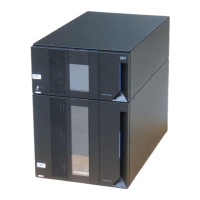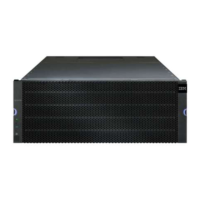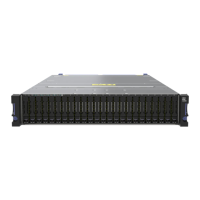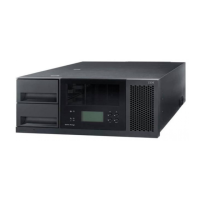Chapter 7. Advanced maintenance, troubleshooting, and diagnostics 371
– Cache mirroring enabled/disabled
– Read caching enabled/disabled
– Write caching enabled/disabled
– Media scan enabled/disabled
– Redundancy check enabled/disabled
Logical drive-to-LUN mappings
Topology
– Host groups
– Hosts and parent host groups
– Host ports, associated host type, and parent hosts
To load the storage subsystem configuration, perform the following steps:
1. Open the Enterprise Management window and select the subsystem.
2. Select Tools Load Storage Subsystem Configuration from the tool bar menu.
3. Point to the file containing the configuration and load it.
4. The Script Editor and a warning message appear. To load the configuration onto the DS
storage subsystem, choose Execute. You can also edit the script before executing.
The procedure can take a long time, depending on the number of arrays and logical drives
defined. When the procedure finishes, the storage subsystem contains the same
configuration as the source.
While the configuration file allows an immediate recreation of all the parameters configured, it
does not provide a friendly reading file to list all of the configuration. To read the current
configuration, we use the View Profile option described in 7.3.1, “Storage subsystem profile”
on page 371.
7.3.1 Storage subsystem profile
The storage subsystem profile is one of the most important items needed for IBM Support to
help you solve whatever problem you have with your DS storage subsystem. It is a simple text
file that includes data about the various firmware levels, array and volume configuration,
storage partitioning, and the status of all the hardware components of the DS storage
subsystem.
It can also be accessed through the Storage Manager interface in a readable format, as
opposed to the saved configuration option (script), which is mostly used for backup and
restore purposes.
Attention: This procedure replaces any configuration on the storage subsystem. All data
stored on the DS storage subsystem is lost because all logical drives are initialized. It is a
good idea to save the configuration every time a change on the storage subsystem is
made.
Do not attempt to load a saved configuration on the DS storage subsystem unless you fully
understand the consequences.
Note: Always save your profile after you have changed the configuration of the DS storage
subsystem. For example, if you create or delete logical drives, change the mapping, or add
new disks or enclosures to the DS storage subsystem, save a new profile, as IBM Support
might need it to help you in case of any problems.
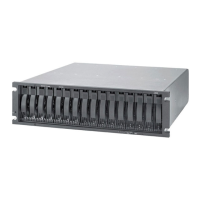
